Because the upcoming Timothée Chalamet-starring biopic A Full Unknown proves, few musicians have had the identical influence as Bob Dylan had within the Sixties – significantly the trio of albums he launched over a stellar 14 month interval in 1965 and 1966, Bringing It All Again Dwelling, Freeway 61 Revisited and Blonde On Blonde. In 2016, Dylan biographer David Dalton appeared again on the holy trinity that modified music without end.
Bringing It All Again Dwelling, Freeway 61 Revisited and Blonde On Blonde are the high-water mark of 60s rock, and with the quasi-religious reverence due them, they’re referred to by Bob Dylan followers because the Holy Trinity. The three most elegant albums in rock had been created in a 14-month interval from January 1965 to March 1966. In November 2015, classes from these albums had been issued as The Bootleg Sequence Vol. 12: The Slicing Edge 1965-1966. It got here in three codecs: the ‘better of’ consists of two CDs, the deluxe version six CDs and the collector’s version 18 CDs – “…each notice recorded throughout the 1965-1966 classes, each alternate take and alternate lyric”. All three codecs include liner notes, notes on the recordings and, in a separate ebook, a set of pictures.
The inclusion of a ebook of pictures from the Holy Trinity interval is not only a gratuitous further, as a result of Dylan’s picture particularly in ’65 and ’66 was important to his creation. You couldn’t have Billy Joel or Paul Simon singing Ballad Of A Skinny Man or Visions Of Johanna. The character who sang these songs needed to be darkish, skinny and androgynous, a doomed visionary adrift within the neon evening of the town – Rimbaud on methedrine.
It was simply such a picture that Dylan assembled. His wardrobe was a code: shades (from loopy jazz saints equivalent to Miles Davis), electroshock hair (Einstein, Chopin, Bride Of Frankenstein), high-heeled suede boots (The Beatles), black denims (the Beats), and flashy polka-dot and ruffle fencing shirts from the Brit Invasion pantomime. By the point he acquired this character collectively he was dripping with perspective.
You’ll be able to see this unique creature in motion in Don’t Look Again, DA Pennebaker’s documentary of Dylan’s 1965 UK tour, and, in the event you’re fortunate, in Dylan and Howard Alk’s speed-freak edit of footage of Dylan’s 1966 English tour (the singer has hardly ever allowed this movie to be screened). There’s a 3rd movie utilizing the identical footage edited by Pennebaker and Dylan’s highway supervisor/confidante Bob Neuwirth into a comparatively sane documentary known as One thing Is Taking place.
The album’s centre, its supply of vitality, is the creation of the character who’s singing on the album, an amped-up fantasy picture of himself, Electrical Bob.

In the summertime of 1965 after I first heard Like A Rolling Stone, I started to suspect there was one thing supernatural about Dylan. It wasn’t simply the surreal lyrics, his radiating picture, his gnomic solutions – as if this weren’t sufficient. The quirky organ, the surreal stream-of-consciousness lyrics, the distorted actuality it projected was clearly an occult act. It modified you in that six minutes and 13 seconds; you noticed the world by his X-ray specs. You turned Bob.
He’s telling you (or somebody) one thing virtually subliminally. You don’t know why, however you’re mesmerised by his story. A story you’re not fairly certain you comply with – however that’s what’s so compelling about it. The solid of characters is straight out of a Fellini film: ‘the thriller tramp… the diplomat together with his Siamese cat… Napoleon in rags….’ It’s about whoever and what they did, however none of this issues. It’s the supply, that insinuating tone of voice, and the expressionist language he makes use of to color this weird Bohemian underworld diorama with all these freaks in it. You’d by no means heard something prefer it earlier than, however you don’t must determine something out, there may be nothing, actually nothing, to determine.
It shocked me in the midst of the day: “What was that?” His capacity to convey these freakish photographs channelled from some shadowy zone of Dylan’s head, as if, whereas listening to the tune, these ideas had spontaneously occurred to him and he had telepathically transmitted them to you. “If the songs are dreamed, it’s like my voice is popping out of their dream.” He truly mentioned that!
Like A Rolling Stone was one thing new and unusual delivered with a laid-back hipster’s disdain. The implication was that the world doesn’t should be the best way we inherited it. Quite the opposite, it may be like this. Let me present you some photos. A way of magic transformation projected a brand new age of infinite chance and oddness. You heard Like A Rolling Stone and also you had been in it. It was as in the event you’d fallen by the rabbit gap.
After I heard Dylan was going to carry out on the Newport Folks Pageant in July 1965, I needed to go. I noticed him and his entourage strolling into the eating room of the Viking Lodge. He appeared like he’d caught his finger in an electrical socket or been struck by lightning – which appeared completely attainable, as how else might you clarify such a improbable apparition? And with the implicit understanding that I used to be cool (I’d been cool for at the least 5 days now) and that one hipster might speak to a different, I requested if I might interview him. “Later,” he mentioned. “A lot later.” Then he pointed to a cute woman in a mini-skirt and mentioned: “Try the field on that chick.” It appeared like a meaningless and dopey factor to say however, hey, it was Bob.
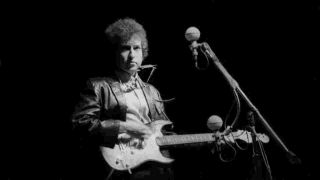
Wild tales began to flow into about him. About that alleged booing: when Dylan performed his Fender Strat at Newport, there might have been some grumpy folks backyard gnomes booing however I didn’t hear it. I’m not saying these antiquarians weren’t mad. Dylan had pulled down the partitions of Jericho. Allegedly Pete Seeger, the grand wizard of folkdom, was backstage with an axe attempting to chop the electrical cable. However in keeping with Al Kooper (who was on stage performing with Dylan) the booing was in all probability as a result of he solely performed three songs. And we’d pushed over 400 miles to get there. It had taken us seven-and-a-half hours from New York. It wasn’t a lot that Dylan performed electrical guitar at Newport, however that he was electrical in thinker Bertrand Russell’s definition of electrical energy: “Not a lot a factor as a method issues occur.”
Mike Bloomfield, who performed guitar that afternoon, thought they’d cheered. However Dylan, together with his endearing perversity, cherished the booing. He revelled in it, he provoked it. It fed into his insurgent, outlaw picture. And now it’s gone into historical past.
Since Dylan’s musical output was within the type of albums and the content material was both pseudo-autobiographical (singing different individuals’s songs as in the event that they’re your personal) or outright autobiographical (mythologised variations of his personal experiences), he quickly realised he’d created a sequence of fictional characters working wild and unfastened and his albums had been, in impact, novels. In some methods the Bob Dylan of the mid-60s is the ultimate flowering of beat literature. Persevering with the epic custom of Jack Kerouac’s life as an ongoing sequence of autobiographies, however placing all of it collectively and in such a conveyable, accessible method by pop songs.
And that’s the best way Like A Rolling Stone began out. Like every intense, overweening book-saturated youth, he wished to put in writing a novel. He did ultimately – type of – with Tarantula (written in ’65 and ’66 however not revealed till ’71), which failed in a kind of spectacular method. He at all times was a superb author of liner notes. In truth his so-called autobiography, Chronicles, is definitely a bunch of liner notes.
Like A Rolling Stone’s outpouring of contempt got here to Dylan initially within the type of a poison prose poem, a “lengthy piece of vomit…” It began out as a Kerouac-style rant that was, in Dylan’s phrases, “very vomitific in its construction… A rhythm factor on paper all about my regular hatred directed in some unspecified time in the future that was trustworthy. In the long run it wasn’t hatred, it was telling somebody one thing they didn’t know, telling them they had been fortunate. Revenge, that’s a greater phrase.” An offended tune born out of rage, which has at all times been a part of Dylan’s temperament.
After I acquired again from Newport I purchased Bringing It All Again Dwelling, which had come out the earlier March. Initially let’s speak in regards to the cowl, because it has some bearing on Dylan’s image-making and mystique-mongering. It’s so strewn with pregnant symbols that it’s been in comparison with Van Eyck’s The Arnolfini Wedding ceremony. Versus his earlier incarnations, the Chaplin-esque waif or earnest Dustbowl Bob, champion of the oppressed, right here’s ‘Large Hair Bob’ Dylan as a hipster dandy. A sensuous girl in a crimson gown reclines on a sofa languidly smoking a post-coital cigarette. Clues are scattered in all places, and the entire scene is enclosed in a blurred halo, as if we’re seeing it by a keyhole, down upon our knees. So provocative was this picture and so enigmatic was Dylan that some hypothesised that the girl was Dylan in drag. It’s truly Sally Grossman, his supervisor’s spouse. It’s an Easter egg hunt. However we’ll go away the deciphering of the clues to seasoned Dylanologists. Let’s put the bloody document on.
Bringing It All Again Dwelling isn’t an album within the sense of a set of songs, it’s a revolution in perspective. Each tune – even the blues yarns Outlaw Blues and On The Highway Once more and the burlesque Americana of Bob Dylan’s a hundred and fifteenth Dream – comes at you with ferocious intelligence and probably the most intense and creative lyrics ever heard.
The album is half-acoustic, half-electric, however Dylan doesn’t begin with the acoustic tracks, the best way he did in live performance. The primary observe, Subterranean Homesick Blues, is pure high-octane rock. Since you’re such a cool cat you recognise the title as a reference to Dylan’s idol Jack Kerouac’s ebook in regards to the Bohemian underworld, and the tune itself is a mutated riff on Test Berry’s rock’n’roll rant, Too A lot Monkey Enterprise. So proper there you might have in a nutshell what Dylan is as much as: marrying modernist writing with the mojo of the blues and the raunch of rock’n’roll. As if Sonny Boy Williamson had been reciting Kafka in 4/4 time whereas rolling a joint.
This was critical immersion in hipness. It’s punk and punchy and in addition an uncanny forecast of rap. This observe and Maggie’s Farm are his snarling kiss-off to the protest motion. Like he mentioned: “All my songs are protest songs.” Each had been issued as singles, and Subterranean Homesick Blues crept into the US chart at No.39. Dylan’s voice itself asks: Which aspect are you on? He’s continuously pissed off at one thing or anyone, all the pieces is damaged, ecology, marriage, sunset on the unions. And we’re within the automobile singing proper lengthy. Wherever he goes we go.
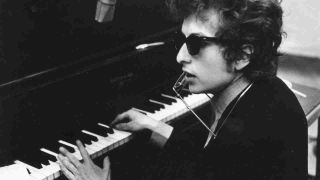
Each line of It’s All Proper Ma (I’m Solely Bleeding) is neon adrenaline. A haunted panorama, a rustic underneath a spell from which we’re at all times searching for somebody to wake us up. An unsparing X-ray of American tradition: all quick floor and hieroglyphics promising unattainable issues, dream-spinning hucksterism, Fourth Of July rhetoric, sentimentality and brutality. It was Dylan’s genius to plunge into the nightmare’s black core and resurface with an astounding litany.
Mr Tambourine Man opens the acoustic aspect (that’s when there have been two sides to each album, and also you you observed which tune opened the B-side). Dylan had tried to document it on his earlier album, One other Aspect Of Bob Dylan, however hadn’t discovered its groove. It’s a tune so elegant you might be left dumbfounded. Perhaps Rimbaud in a lyrical second might have written it, however who is aware of if the little hash-eater might sing. Shortly afterwards, The Byrds made their liquid-hydrogen model, thereby inventing folks rock. Dylan at all times denied that it was about medicine – pot particularly. However Dylan at all times denied all the pieces, didn’t he?
When Dylan turned a rock star, issues modified. For one factor a rock star wants a gaggle, and after you have a solid of characters to cope with they want organising. On Bringing It All Again Dwelling the preparations on the rock tracks are fairly ragged. In contrast to different lead singers in rock who had been used to working with a gaggle, Dylan didn’t have an intuitive sense of what and when everyone ought to be taking part in, so the musicians performed full out and at any time when they wished to. In Al Kooper’s picturesque description they had been “stepping on one another’s dicks”. Due to the shortage of route on the rock tracks it’s a little bit of a drunken boat; a crank-filled craft on the verge of capsising and being swallowed up by the maelstrom they’ve created, spun out of the creativeness and stored afloat by sheer momentum. It’s a ghost ship, however Dylan maintains his equilibrium by these unstable songs and, as with many issues in Dylan’s world, the very unsteadiness creates an addictive pressure, and anyway there’s a lot happening you don’t discover it. On the album’s centre, its pulsing vitality, is the creation of a personality who’s singing the songs.
That mentioned, there’s nothing awkward or pressured about Bringing It All Again Dwelling’s electrical parts. Dylan at all times had that electrical spark in him. Even on his folks songs he performed his guitar percussively, and it’s that energising, nuclear momentum inside him that drives Maggie’s Farm, like a haywire tractor knocking over an outhouse.
Once you heard Dylan had recorded Maggie’s Farm in a single take, and grasp takes of On The Highway Once more, It’s Alright, Ma (I’m Solely Bleeding), Gates Of Eden, Mr. Tambourine Man, It’s All Over Now, Child Blue and If You Gotta Go, Go Now (which wouldn’t make it on to the album) multi functional afternoon, you knew there was one thing supernatural about this man. The place’s he from, how’d he get there?

Nicely, the official model is he was born Robert Zimmerman on Could 24, 1941 to Abe and Beatty Zimmerman in Duluth, Minnesota, a spot so chilly the waves froze in mid-curl. Dylan, in fact, has cast his personal creation delusion, claiming he was born from the grooves of a 78rpm document: “The sound of that document made me really feel like I used to be anyone else. That I used to be not born to the precise mother and father or one thing.”
Shortly after his start his mother and father moved north to Hibbing, a mining city with the largest man-made gap on the planet. He wished to get out of there as quickly as attainable. However as he acquired older Hibbing turned a repository of nice imagery and nostalgia. It was additionally the place he first encountered totally different sorts of music. Late at evening he might hear radio stations all throughout the USA taking part in blues, nation, pop, swing, cajun, mariachi… These sounds would enrich his music and change into the mysterious supply of a few of his odder ventures, such because the perplexing Self Portrait, Shadows In The Evening and Christmas In The Coronary heart.
He was in a rock band in highschool, however when he went to varsity he found folks music, then a craze within the bohemian space of Minneapolis often known as Dinkytown. Rock was thought of corny and industrial, so he steeped himself within the unusual outdated tunes, many by garbled transmissions that got here right down to us with fantastically weird lyrics. In Dinkytown he got here up together with his first nice creation: Bob Dylan.
Quickly afterward he found Woody Guthrie and made his option to New York’s Greenwich Village, a folks shtetl with espresso homes the place the ladies wearing black and browse weighty paperbacks. He first appeared as a Charlie Chaplin naif, his earliest songs merely imitations of Woody Guthrie’s speaking blues. Like a sponge he soaked up modernist writers, avant-garde motion pictures and left-wing politics launched by his girlfriend Susie Rotolo.
One behavior he acquired from Hibbing was his profound secretiveness, elusiveness and outright mendacity. He was a double outsider, a Jew from an obscure mining city, each of which he would deny and change together with his personal handmade mythology: he was from Gallup, New Mexico, labored as a lumberjack within the nice Northwest, lived with the Sioux, and so forth. Writing and singing protest songs got here simply to him, fired by his interior rage and resentment. He personalised radical rants by injecting modernist-word collages into his songs.
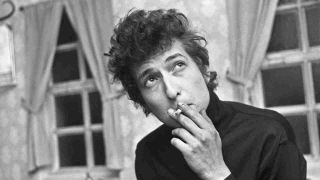
On the 1964 Newport Pageant he was anointed the crown prince of people, however this had mockingly made him a star. Aside from the people madonnas, Joan Baez and Judy Collins, this was not an appropriate position within the folks hierarchy. Within the Kettle Of Fish, New York’s prime folks watering gap, in the event you had a document within the charts you bought a scurvy look from the outdated guard. However fame and fortune had been inevitable as soon as his pop-protest tune Blowin’ In The Wind was coated by Peter Paul And Mary. Though their model was criminally kitsch, it made Dylan a millionaire, and since he might not fake to be a part of the people underground he determined to comply with his personal inclinations. He noticed that writing anti-war hymns was a cul-de-sac.
Amongst his different abilities, Dylan is the poet of rage and scathing put-downs. Even in his folks singing days his animosity may very well be deadly, as in Masters Of Struggle and The Lonesome Demise Of Hattie Carroll. The electrical guitar not solely modified the voltage of his songs, the sting of the electrical guitar additionally matched Dylan’s outrage and sarcasm.
Shortly after Newport, Irwin Silber, the editor of Sing Out!, the righteous bulletin of the people motion, revealed an open letter to Bob about how fame had modified him – warped him, in actual fact: “I noticed at Newport you had someway misplaced contact with individuals.” Cocooned by his entourage, his songs had been now both maudlin sentiments or assaults of gratuitous cruelty. Dylan confirmed Silber’s statement by directing at him one of the scathing put-down songs ever: Positively 4th Road, the biting phrases etched by Mike Bloomfield’s deadly guitar. The ache in his voice is palpable however so is the venom.
Except for the size of his songs and his weird solid of characters, one of many improvements Dylan dropped at pop music was new subject material. He didn’t, at the least at this level, sing foolish little love songs. The vitriol of Like A Rolling Stone was adopted by two extra character assassinations: the one about Irwin Silber, which made it to No.7 on the US chart, and the follow-up Can You Please Crawl Out Your Window. No one did righteous indignation higher than Bob, however with the backing of future members of The Hawks (future members of The Band minus Levon Helm) the tune was too hectic and shrill and barely made it into the chart.
His subsequent album, Freeway 61 Revisited (additionally launched in 1965), is only a straight nuclear blast of rock. Dylan has gotten the mix down, and these musicians – Al Kooper, Mike Bloomfield, drummer Bobby Gregg – carry out extra like a gaggle. The propulsive momentum, particularly on Freeway 61 Revisited itself, with its opening slide whistle, is pure punk. On Ballad Of A Skinny Man, with its Halloween music and bone-chilling lyrics, you’re simply glad Bob isn’t speaking about you. The album ends with Desolation Row, a reference to Kerouac’s novel Desolation Angels.
Freeway 61 Revisited is blues and rock, one thing Dylan might do simply. He truly began out as a rock singer. Granted, Bob had informed us he had been in rock’n’roll bands in highschool, however by then we had change into cautious of taking him at his phrase. This was simply the type of factor he might have make up. However his teenage idols actually had been the piano demons Little Richard and Jerry Lee Lewis. Dylan performed piano in Bobby Vee’s band underneath the identify of Elston Gunn.
At a live performance in Minnesota in 2013 that Vee attended, Dylan mentioned that he had been on stage with everyone from Mick Jagger to Madonna “however probably the most significant particular person I’ve ever been on stage with” was Bobby Vee. Dylan’s first single was truly a rock tune, Blended-Up Confusion, launched in December 1962.

There’s fairly a little bit of displaced blues poetry on Freeway 61 Revisited, as a result of that’s the freeway that runs from Minnesota to New Orleans. It’s ghostly due to the blues and since it intersects with the crossroads the place the Satan taught delta shaman Robert Johnson to play the blues. However the blues on the album aren’t significantly haunted. It Takes A Lot To Snigger, It Takes A Practice To Cry is a pastiche of blues strains, that will naturally contain extra trains. Every verse simply hangs there ready for a tune to come back alongside. Outlaw Blues makes use of Southside Chicago blues to hold Dylan’s quirky nonsense lyrics on.
Dylan’s compadre Bob Neuwirth challenged him to make use of the road ‘if you’re misplaced within the rain in Juarez and its Eastertime too’ in a tune, and he did simply that on Simply Like Tom Thumb’s Blues. There by no means was a weirder opening line to a tune, or higher recommendation in the event you ever end up embroiled on this noir-ish story of misspent youth:
And your gravity fails
And negativity don’t pull you thru
Don’t placed on any airs
Once you’re down on Rue Morgue Avenue
They acquired some hungry girls there
And so they actually make a large number outta you…
Dylan was capable of write baroque lyrics like ‘jewels and binoculars hold from the top of the mule…’ effortlessly, however he additionally caught the best way individuals truly talked. Most pop lyrics used a synthetic Tin Pan Alley diction. Dylan, however, might mimic the lope of dialog in such strains as ‘Nicely, anyone will be similar to me, clearly/However then, now once more, not too many will be such as you, fortuitously’ (from Completely Candy Marie).
Amongst all these profound songs there needed to be some comedian reduction, as in Bob Dylan’s a hundred and fifteenth Dream, a hallucinatory cartoon of the USA because the delirious reminiscences of a deranged Captain Ahab. And in On The Highway Once more he brings on stage his acquainted holler-dwelling hillbilly allotting 80-proof hokum. On Like A Rolling Stone his voice has a swirling present as he leans on the phrases ‘Howwww does it feeeeeel?’ with these howling vowels you possibly can really feel in your bones.
And the sound. The fusion of music and phrases that Dylan conjured up out of this tuning fork in his head. Anyway, he doesn’t actually wish to exhibit too actually what he’s considering. It’s higher that the gamers comply with no matter lead he offers them and that they attempt to approximate it. He doesn’t need the perfection of the studio musician, and to combine it up he brings in a guitar participant from Chicago (Mike Bloomfield), and a guitar participant (Al Kooper) to play the organ. When individuals inform him Kooper’s not there to play the organ, he replies: “I’ll resolve about that.” The musicians try to tune into Dylan’s wavelength, and the strain in that created a sure suspense within the supply of the tune. However ultimately all of them get contact highs. Kooper later described Dylan’s recording strategies as “the highway map to hell!”
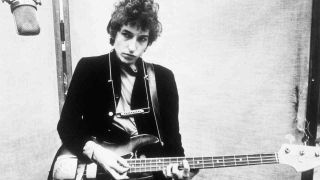
Dylan’s sensitivity as to what music will work finest with what lyrics is acute. On observe 5 of the Desolation Row out-takes within the Slicing Edge field set, the musicians (Bloomfield, Kooper, Gregg and bassist Harvey Brooks) provide you with a hurdy-gurdy carnival riff that would appear a perfect match for the freak-show lyrics. However ultimately Dylan has a extra refined concept: he asks Nashville session guitarist Charlie McCoy to play a melody harking back to Marty Robbins’ El Paso. Excellent! The candy cowboy melody doesn’t diminish the menace, as a substitute it provides an eerie, foreboding tone to Dylan’s phantasmagoric photographs.
On the so-called Amphetamine Tour of 1966, Dylan and The Hawks had been utilizing up their ampage at a scary price that was sure to burn everyone out. Within the footage from that tour we see a possessed, skeletal Dylan, somebody disconnected from actuality, an virtually spectral presence, however creating the best rock’n’roll music ever made.
Blonde On Blonde was recorded throughout the US leg of that tour. It has a way of weariness, of issues working down – ‘Lights flicker from the other loft… However there’s nothing, actually nothing to show off…’ This solely serves so as to add to the thriller of the ruminative, dreamlike nature of the album, together with its heavy doses of recrimination. We see Dylan on the quilt in a ghostly, out-of-focus photograph as if disappearing earlier than our eyes. Which he type of was, as if he knew that interval of his life needed to finish if he had been to outlive.
You hear that outdated vitality surge right here and there on Leopard-Pores and skin Tablet-Field Hat, I Need You and Clearly 5 Believers, however Blonde On Blonde is totally different type of document altogether. Dylan not feels the necessity to impress or stun the listener the best way he did on the earlier albums. By now he’s the undisputed Hamlet Prince of Rock. On Freeway 61 he was breaking his ass. Princes don’t break their asses.
Dylan’s voice right here is nice and clean, versus the uncooked, Appalachian growl on Freeway 61 Revisited or the raspy voice on his earlier information. Right here he’s truly crooning ‘The place are you tonight, Candy Marie?’ And in contrast to his attribute method of recording songs in a single take, there are lots of takes of a number of Blonde On Blonde songs. One of many joys of the Slicing Edge field set is listening to them evolve. Since we all know the launched variations, there’s a pure reflex if you hear a false begin. Once they begin taking part in Caught Inside Of Cellular With The Memphis Blues Once more in 6/8 time you wish to shout at Dylan: “That’s not the way it goes, man!” Dylan additionally experiments with totally different genres, some fairly weird, equivalent to a reggae model of Visions Of Johanna and a Bo Diddley backing on Simply Like A Lady. Dylan has mentioned that on this album he acquired the closest to his sound – “that skinny, that wild mercury sound. It’s metallic and brilliant gold, with no matter that conjures up.”
The true alchemy of Blonde On Blonde is the best way Dylan freaks numerous strains of pop music in a type of Frankenstein experiment, like patching physique elements collectively. The oddest is his injection of pop music undertones. Should you hear carefully you possibly can hear echoes of Leslie Gore, Jackie DeShannon, Carol King and The Cowsills, in addition to Gershwin, Memphis Minnie, Marty Robbins, Bo Diddley, Bob Lind, Buck Owens and Ivory Joe Hunter.
There’s no higher instance of Dylan’s capacity to speak the precise technique of thought than Visions Of Johanna, as he strikes seamlessly from one scene to a different by a solid of weird characters. We comply with his voice like a stream of consciousness as photographs and folks drift by his mind, from Louise to the nightwatchman, to the ladies out on the D-train, to the Mona Lisa, the peddler, the countess, Madonna, the fiddler… Visions Of Johanna is Dylan’s most profound tune, even when, or perhaps as a result of, we don’t know what’s occurring. It’s an ethereal thoughts film with one of the elegant strains in rock: ‘The ghost of ’lectricity howls within the bones of her face.’
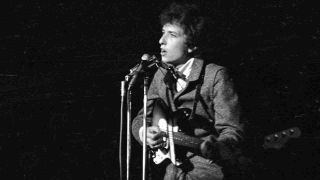
Blonde On Blonde has a claustrophobic environment. Issues are closing in, the oxygen is nearly used up, and the temper is so subterranean you come up from it attempting to keep away from the bends.
Dylan’s hectic schedule got here to an abrupt halt together with his alleged motorbike accident on July 29, 1966. He was mentioned to have suffered from both a damaged collar bone or three cracked vertebrae. For some time he wore a neck brace, supposedly to strengthen the ‘accident story’. However a much less dramatic account has come to gentle which claims he was by no means on the motorbike. He was wheeling it out of a storage to take it down the highway and put air within the tyres, when the bike fell over onto him. And there you might have the a hundred and fifteenth principle in regards to the motorbike accident.
However the accident supplied a great cowl story for an exhausted Bob Dylan on the finish of his tether. He spent just a few weeks in a close-by physician’s attic bed room detoxing from medicine. He didn’t carry out or launch a brand new album for one more two and-a-half years. When he did reappear with a brand new album, John Wesley Harding in December 1967, it was gentle years from Blonde On Blonde, a mystic, ruminating, aphoristic work. Since Dylan was the Pied Piper of rock, John Wesley Harding’s transfer to a extra pared-down model was taken as a cue to cease looking for after unusual gods (Indian ragas, Stockhausen) and get again to your roots. The document that adopted, Nashville Skyline, was an album of upbeat nation songs that includes a duet with Johnny Money. And since he was nonetheless seen as a prophet, nation fever immediately descended upon the land.
As if there weren’t sufficient Dylans working by individuals’s heads within the Sixties, the following 5 many years noticed extra incarnations. He at the moment appears to have settled on a variation of Vincent Worth in The Home Of Usher.

With different rock stars, equivalent to Jagger, Hendrix, Elvis, Bowie even, our picture of them ultimately turns into stabilised. We are able to separate the performer from the human being. However with Dylan we’ve by no means fairly been ready to do that. As quickly as you suppose you perceive him he’s gone.
Nobody has written extra autobiographical songs than Dylan, however within the notes for the Biograph field set he claimed that “None of my songs are autobiographical”. Nicely, in fact he would, he’s a pure born liar and secretive as an outdated hen.
One factor is definite: he’s not about to put in writing extra memoirs any time quickly. Even Chronicles wasn’t an autobiography. It’s truly liner notes Dylan wrote for projected Japanese reissues of As Good As I’ve Been To This World and World Gone Improper cobbled collectively.
When he did tried to clear up the query about his multiphrenic id, in an interview in 1985, issues solely acquired extra complicated. “Generally the ‘you’ in my songs is me speaking to me. Different occasions I will be speaking to anyone else… It’s as much as you to determine who’s who. Lots of occasions it’s ‘you’ speaking to ‘you’. The ‘I’ like in ‘I and I’ additionally modifications. It may very well be an I or it may very well be the ‘I’ who created me. And likewise it may very well be one other one that’s saying ‘I’. After I say ‘I’ proper now, I don’t know who I’m speaking about.”
Then once more, you get some concept of how Dylan wish to be remembered. He says he admires “individuals who died leaving an important unsolved mess behind, who left individuals for ages to do nothing however speculate”.
Initially revealed in Basic Rock situation 291, January 2016

